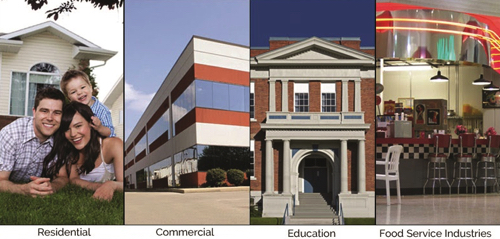
Editorial by: Mike Simon
Look around. The world of security solutions contracting has changed dramatically. It’s a far cry from an industry that seemed to stand still for many years: that was until every device and solution began riding on the network.
The Internet of Things (loT) —devices or sensors that connect, communicate or transmit information with or between each other through the Internet— is the future of connectivity. According to industry research, 69-percent of consumers plan to buy an in-home device in the next five years.
But the loT doesn’t just apply to residential. Today, building automation and communication systems are moving to becoming increasingly tied to the IoT.
According to Intel Corp., Santa Clara, Calif., the loT makes technology more affordable for owners and operators of small, medium and enterprise locations and also yields significant energy and other benefits tied to building automation.
The increased interoperability between systems and services will continue to open a wave of new opportunity for systems integrators to provide exciting and profitable services to their customers.
Well-prepared means more customers
With all this connectivity, it’s critical for systems integrators to be able to make the most of the way in which they approach the market so they can be efficient and effective and migrate seamlessly from traditional residential contracting to the commercial marketplace. They need to be able to take advantage of new markets and increase profitability with recurring monthly revenue and emerging services.
To do this, systems integrators need to standardize on their integrated security management platform for all customers. They need a single, remote, cloud-based interface for all their projects, from small to large residential all the way to enterprise commercial, healthcare, education, banking and more.
That’s the beauty of web-hosted services and an interactive interface integrators can use to assess system status in real-time, whenever they want. With a standardized interface, contractors can leverage all their accounts easily and simply, and even provide proactive, 24/7 service.
Today, there are cloud-hosted security management interfaces and platforms that allow systems integrators the ability to control and manage all their customer’s integrations, including security, access control, video, energy management and critical temperature monitoring. With this capability, integrators have the ability to view, control and interact with all their systems on one screen from any web-enabled device. It’s quick, easy and super-intuitive.
With web-hosted integrated systems, the customer doesn’t have to maintain on-site servers or put additional strain on the data center, and is also relieved from worries over constant software updates. It’s all on cloud servers, hosted away from their facility, backed by redundancy and available anywhere, anytime, thanks to the Internet and mobile connectivity.
Updates are regular and automatic, so staying up to date with the most current software is automatic. In addition, end users can save thousands of dollars each year by not having to manage on-site servers or attend to maintenance. Finally, they can budget monthly for security services as an operating expense, rather than obtain a large capital outlay for data center equipment, racks, cabling infrastructure and more.
A single, universal interface for every customer provides other advantages. For the systems integrator, they can easily bundle a host of services, while strengthening their company’s value proposition in the competitive contracting marketplace. They can scale up or add new services when a customer is ready or additional funds become available.
In addition, they can provide a value-add to customers in the way of customized alerts and detailed reporting for security; critical temperature monitoring history; and video verification and activity video snapshots delivered to smartphones.
A single interface also allows integrators to better manage customer support, and that makes the end user satisfied and stickier, i.e., less likely to jump ship for another service provider.
Installing companies will also appreciate the fact that often system problems and challenges can be solved remotely, reducing the costly truck roll. In addition, if an onsite visit is called for, technicians have a better idea of what parts or equipment they need to bring to the job, so they can go to the project once and be done. Freeing up technicians in the field lets the systems integration companies concentrate on adding new customers, because their personnel will be more readily available for additional project work and not on a service and maintenance call.
Cloud-based services make everyone’s lives easier.
Users have control and simple access from any web-enabled device. Integrators can manage and support all their customers from the web, and provide the ever-valuable proactive, remote maintenance services so critical in keeping customer’s systems healthy and running 24/7.
Being able to standardize on a single, web-hosted interface for every customer and project is the way to increase profitability, add new business, and satisfy a customer now and well into the future.
About The Author:
By Mike Simon
Managing Partner
Connected Technologies
http://www.connectedtechnologies.us/

